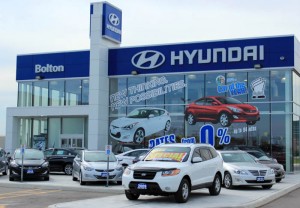 By Robb Engen, Boomer & Echo
By Robb Engen, Boomer & Echo
Special the Financial Independence Hub
When it comes to buying a car, most of us generally fall into two camps: those who buy new for the latest technology and safety features, and those who buy used because they believe that buying new is a waste of money.
We know cars are depreciating assets and lose the most value in the first year or two of ownership – hence the old saying that a car loses 20 to 30 per cent of its value the minute you drive it off the lot. That’s why, historically, the best deals can be found on used cars that are one or two years old.
The problem is that both car sellers and buyers have figured this out and so supply and demand have caused the prices of used cars to rise accordingly.
New cars, on the other hand, have become increasingly more affordable as car dealer incentives, creative financing, and low interest rates drive prices down. It’s common to see loans at seven or even eight years today to help buyers take home a new car.
I bought a new car in late 2012. Being acutely aware of the pitfalls of buying new, I made a few rules before taking the plunge.
Financing
Most of us can’t afford to pay cash for a brand new vehicle, so we need to finance the purchase. It can be tempting to drag the financing out over 5+ years to keep monthly payments low, but a long-term loan is a mistake for several reasons.
For one, you might end up buying more car than you need. A $40,000 vehicle financed over 96 months comes to less than $450 per month. Most warranties only cover three-to-five years, after which you’re on the hook for maintenance costs that might start to surface. Who wants to be on the hook for used car maintenance while you’re still paying new car premiums?
I took out a four-year loan and plan to drive the car at least 12 years. That’s eight payment-free years to save and invest for other purposes.
Make and model
We pay a premium for brands based on their reputation for quality and service. We’ve all heard of Toyota and Honda owners who drove their vehicles for a decade or more. But other car makers have caught up in terms of quality while their pricing still lags behind.
I looked at several SUVs on the market before deciding on the Hyundai Sante Fe. Hyundai has come a long way since the days of the Pony and Excel and it has developed an excellent reputation for design and durability.
The Sante Fe was considerably less expensive than its Toyota and Honda counterparts – by as much as $10,000. When the best you can negotiate off a new car is one or two thousand dollars, saving $10,000 by going with a different, but comparable brand can make a huge difference.
Final thoughts
You’ll never win an argument that buying a new car beats buying used. But conditions today suggest it’s not as bad a deal as it used to be. The key is to avoid buying too much car for too long a term and paying too much premium for perceived brand quality.
What is your car buying mentality? Are you in the new or used camp?
 In addition to running the Boomer & Echo website, Robb Engen is a fee-only financial planner. This article originally ran on his site on February 15th and is republished here with his permission.
In addition to running the Boomer & Echo website, Robb Engen is a fee-only financial planner. This article originally ran on his site on February 15th and is republished here with his permission.

